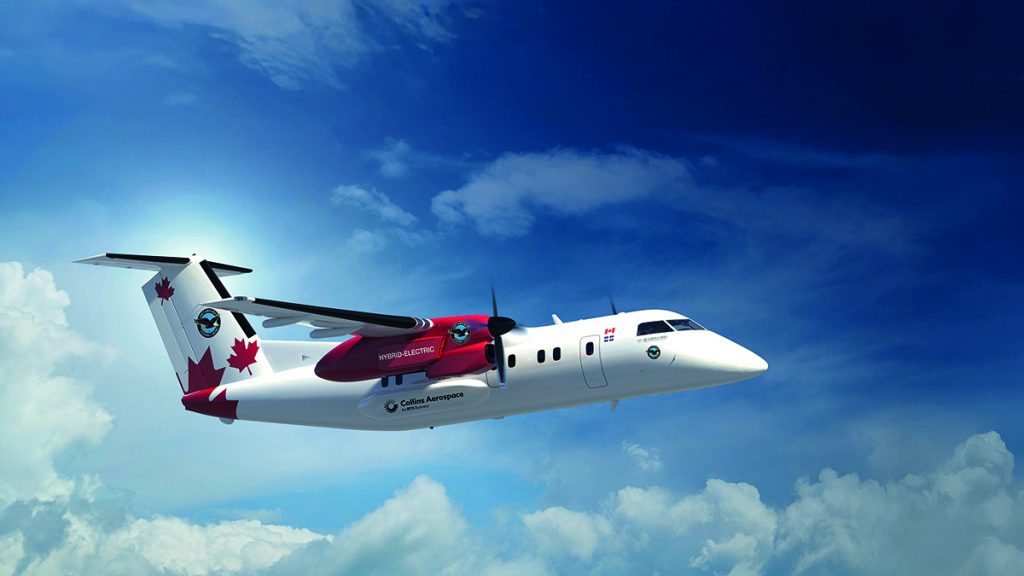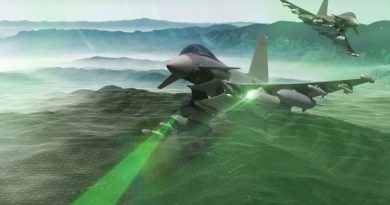Future Proofing
Engines are the key element in aviation achieving its environmental targets and that includes electric, hybrid, hydrogen and SAF. Ian Harbison spoke to the leading players.
Dr Michael Winter, previously Principal Fellow of Advanced Technologies at Pratt & Whitney and now Chief Science Officer at parent company RTX, says 80% of aviation emissions are produced on flights of greater than 950 miles, so the current focus has to be on those types that are the main cause of CO2 emissions, with non- CO2 emissions likely to attract more attention as well. There may be opportunities in the future to look at aircraft with lower range and lower payload, He says the company is ideally placed to bring new technologies together and integrate them into propulsion systems. The main focus is continuous improvement of the gas turbine engine, which, since jets were first introduced about 85 years ago, has measured at a rate of about 1% per year in terms of average fuel efficiency across the fleet.
There are two key factors affecting engine design:
Thermal efficiency, coming from the engine core, where the energy in the fuel is released and turned into mechanical energy to turn the shaft.
Propulsive efficiency, which comes from the fan, the bypass ratio and the nozzle.
The company made a significant breakthrough with the Pratt & Whitney Geared Turbofan (GTF), which enabled fuel savings of up to 20% over previous engine types. By June 2023, having entered service in 2016, GTF-powered aircraft saved airlines more than 1.7 billion gallons of fuel and over 17 million tonnes of carbon emissions. It is now working on the GTF Advantage, which should reduce fuel consumption and CO2 emissions by up to a further 1% as well as offering a 4-8% higher take off thrust and higher thrust at altitude.
He says improving thermal efficiency has been the target of all the engine companies but climate change means the world is getting hotter and dirtier, so more attention is needed on improving the resilience of the components. Higher ambient air temperatures mean that wings generate less lift, so more power is needed to maintain the same performance. Reduced air quality in some parts of the world means that non-volatile particulates are continuing to increase. Some of these, like sand, can erode blades or melt and form a glass that blocks cooling holes but the main problem is the extreme temperatures in the engine that bring about chemical changes to the pollutants.
Sustainable aviation fuel (SAF) is also important. He says: “Today, the Pratt & Whitney modern products are capable of 100% SAF. We are working with other members of the industry to bring SAF forward, as there is clearly not enough today, and are an active partner with the industry and the approval boards, such as ASTM International.”
Hybrid electric
He points out that jet fuel is ‘a really good molecule for powering a plane’. It releases about 45MJ/kg and is relatively stable. Even the best batteries available, or under development, have significantly less energy per unit mass and per unit volume. In addition, they are heavy, as they require a box, a thermal management system and fire protection. In fact, jet fuel has forty times more energy to release per unit mass.
However, there is continuous development and the current technology is mature up to about 1 megawatt, including the batteries, motors, generators, drives and distribution systems. The company is in partnership with Collins Aerospace, another RTX company, and is working on several hybrid-electric demonstrator programs addressing a range of future applications. For the entry level STEP-Tech project, they are developing a scalable system in the 0.1 – 1 MW range for distributed propulsion concepts. This integrates a new, very efficient gas generator engine from Pratt & Whitney Canada (P&WC) with batteries, control logic and propulsors.
At Farnborough, RTX announced that it had successfully validated sustained operation of the thermal engine, electrical generator, battery system and propulsors to demonstrate energy transfer between these components through the high-voltage electrical network.
With funding from the Canadian and Quebec governments, a de Havilland Canada Dash 8-based Hybrid-Electric Flight Demonstrator is being developed that will integrate the 1MW gas generator engine with the 1MW electric motor and use a gearbox to drive a propeller. This will be mostly contained within the existing nacelle. The fuel burn can be optimised depending on the mission, such as using both for climb and just the gas generator engine for cruise.
A derivative of that 1 MW motor will be used on the hybrid-electric GTF demo as part of the Sustainable Water-Injecting Turbofan Comprising Hybrid-Electrics (SWITCH) programme. This is supported by the European Union Clean Aviation Joint Undertaking with a consortium of Airbus, Aristotle University of Thessaloniki (Greece), Chalmers University of Technology (Sweden), Collins Aerospace, DLR German Aerospace Center, GKN Aerospace, MTU Aero Engines and the University of Stuttgart. The goal is to achieve up to a 25% improvement in fuel efficiency and reduced CO2 emissions compared to current engines powering short and medium range aircraft. The consortium is coordinated by MTU. RTX recently announced the completion of the preliminary design review of the hybrid-electri GTF engine demonstrator.
It combines hybrid-electric propulsion and the Water Enhanced Turbofan (WET) using a GTF engine. The hybrid-electric powertrain will optimise the performance of the gas turbine while WET recovers water vapour from the engine exhaust and re-injects it into the combustion chamber to significantly improve fuel efficiency, reduce NOx emissions, and lessen contrail forming emissions
As a typical narrowbody (which he describes as ‘the heart of the market’), an Airbus A320 has two 30,000lb thrust engines, equivalent to a total of 36MW. About 5% of that power could be augmented by putting a 1 MW motor starter generator on the core of each engine and a 0.5-1MW motor on the low pressure spool of the engine that turns the fan. Moving power between the two provides opportunities to optimise efficiency throughout the flight.
He says whenever the next generation of aircraft will start development – likely around the mid-2030s or later – they will still be flying in the 2060s, so entirely different batteries will be progressively available, ofering greater flexibility in optimising efficiency with the systems.
Hydrogen
Pratt & Whitney has had a long involvement with hydrogen propulsion. In 1956, it was working on an engine for Project Sun Tan, a CIA long-range reconnaissance aircraft. This was the Lockheed CL-400, from Kelly Johnson’s Skunk Works. It was intended to fly at Mach 2.5 at altitudes around 100,000ft, where the air is so thin that hydrogen is the only possible fue, but was cancelled in 1958 to be replaced by the SR-71 Blackbird.
The atttaction of hydrogen as a fuel, he explains, is that it releases 102-122MJ/kg but it takes up four times the volume of jet fuel even when it stored as a liquid (at -253°C). When burnt, it could produce more NOx than jet fuel, as well as 2.6 times more water, poentially meaning more contrails, both undesirable.
In 2022, the company was selected by the US Department of Energy (DoE) to develop the Hydrogen Steam Injected, Inter-Cooled Turbine Engine (HySIITE) for commercial aviation, as part of DoE’s Advanced Research Projects Agency-Energy (ARPA-E).
HySIITE has a thermodynamic engine cycle that incorporates steam injection, hydrogen combustion and water vapour recovery to achieve zero CO2 emissions, while reducing NOx emissions by up to 80% and fuel consumption by up to 35% for future generation single-aisle aircraft. The water will be used for cooling and intercooling, reducing temperatures and increasing durability. It will also increase thrust levels, so the core of the engine can be smaller and the water capture may assist with some of the non- CO2 emissions to reduce contrails.
In a further development, Pratt & Whitney Canada will demonstrate hydrogen combustion technology on a PW127XT regional turboprop engine as part of a project supported by Canada’s Initiative for Sustainable Aviation Technology (INSAT). The project, named Hydrogen Advanced Design Engine Study (HyADES), will be in collaboration with Next Hydrogen Solutions, a designer and manufacturer of water electrolysers that use water and electricity as inputs to generate clean hydrogen for use as a green energy source or a green industrial feedstock. They will develop high-efficiency, low-cost electrolyzers needed for establishing hydrogen production infrastructure.
Funding for the first phase of the project will include fuel nozzle and combustor rig testing using hydrogen fuel, while future phases will target full engine ground testing. The PW127XT engine is the most advanced member of Pratt & Whitney Canada’s PW100 engine series, which has powered regional turboprop aircraft for forty years and accumulated more than 220 million flight hours. Launched in 2021, the PW127XT engine offers over 3% better fuel efficiency, 40% improved time on wing, and 20% reduced maintenance costs compared to previous PW100 family models.
As part of a second INSAT-supported project, Turbine Engine Advanced Materials for Efficiency (TEAME), Pratt & Whitney Canada will work with Derivation Research Laboratory (DRL) to explore advanced materials for hot section components of gas turbine engines, which will help to improve thermal efficiency and reduce fuel consumption and emissions. Pratt & Whitney Canada will lead the overall project providing both technical input and project management, while DRL will provide world-class materials testing capability for a wide variety of critical material properties.
GE Aerospace
Arjan Hegeman, general manager of future of flight technologies for GE Aerospace, says the CFM RISE (Revolutionary Innovation For Sustainable Engines) programme has a target is of more than 20% lower CO2 emissions than current engines by using an advanced open fan architecture.
The company has previous experience in this area. The GE36 Unducted Fan was flown on a McDonnell Douglas MD-81 in the late 1980s. It demonstrated excellent fuel efficiency but was extremely complex and noisy. It was cancelled in 1989.
The RISE development cycle began with demonstrations at component level, followed by system level tests and will finish with flight tests before the end of this decade. This is the largest demonstration programme in the company’s history, with four technology pillars that will eventually merge together. The first is the open fan, which will achieve greater propulsive efficiency. The second is the core. By using next-generation compressor technologies and materials, and higher operating pressures, increased thermal efficiency means the core can be smaller. Third is a MW class hybrid electric powertrain. This could be used to drive the fan, or to generate power for aircraft systems to charge batteries. Finally, the use of alternative fuels, from SAF to hydrogen, are possible.
Again, RISE is targeted at the A320/737 replacement market in the 2030s but it is scalable, so could be used for smaller regional aircraft as well.
He says the aim is always to increase the bypass ratio (CFM56: 6, LEAP: 11) but there is a limit in size with a ducted fan as the duct adds weight and drag. With improvements in Computational Fluid Dynamics, it has now been possible to optimise the airfoil shapes. Instead of two contra-rotating fans, as on the GE36, there is now a single fan with a static second stage. As for noise, the airfoil shapes have also been tuned to produce noise levels below LEAP engines. The fan diameter is slightly larger than the current LEAP nacelle but there should be no configuration problems with next generation narrowbody designs.
In July, CFM International announced that progress is accelerating for RISE, with more than 250 tests completed and new research partnerships formed as technologies continue to mature on the way to full-scale Open Fan tests.
For example, CFM parent company Safran Aircraft Engines’ agreement with French aerospace research agency ONERA to conduct wind tunnel tests is demonstrating the aerodynamic and acoustic performance of Open Fan designs. More than 200 hours of wind tunnel testing have been completed at Onera Aerospace Lab using a 1:5 scale model of an Open Fan, including a version of the model mounted on a demonstrator plane wing section for testing with Airbus. A high-speed, low-pressure turbine test campaign with advanced turbine blades also ran.
Aslo in July, GE Aerospace and the US Department of Energy’s Oak Ridge National Laboratory reached a new Cooperative Research & Development Agreement (CRADA) on supercomputing, to develop new computational modelling and simulation capabilities. This will help the company better manage large simulations, more efficiently extract information, incorporate Artificial Intelligence (AI) tools to improve understanding of results, and streamline the process to visualise the physics, expanding its capabilities to design next-generation aircraft engine technologies like Open Fan.
Oak Ridge National Laboratory is home to Frontier, the world’s fastest supercomputer, capable of crunching data at exascale speed, or more than a quintillion calculations per second. It is also renowned for its computing expertise. After an initial simulation in 2023, GE Aerospace now has run additional simulations of improved designs on Frontier that analyse different engine operating conditions to better understand aerodynamic characteristics and acoustic signatures.
The company is partnering with NASA on several propulsion research programmes. In a direct partneship, it is developing a hybrid electric demonstrator engine that will embed electric motor/generators in a high-bypass commercial turbofan to supplement power during different phases of operation (also applicable to RISE). This includes modifying a Passport business aircraft engine with hybrid electric components for testing through NASA’s Hybrid Thermally Efficient Core (HyTEC) project.
Initial component-level testing of electric motor/generators and power electronics has been completed and systems testing has been carried out at GE Aerospace’s EPISCenter in Dayton, Ohio. Additionally, a baseline test of the Passport engine to characterise performance before hybrid electric components are added was completed at the company’s Peebles Test Operation, also in Ohio.
Results of the hybrid electric component and baseline engine tests are being used to evaluate and update models in preparation for a ground test.
NASA recently awarded GE Aerospace a contract for Phase 2 of the HyTEC project to continue developing technologies for an aircraft engine core demonstrator test later this decade. Phase 2 builds on work completed in Phase 1 of HyTEC for high-pressure compressor and high-pressure turbine advanced aerodynamics, as well as the combustor.
Under NASA’s Electrified Powertrain Flight Demonstration (EPFD) project, it has partnered with Boeing and its subsidiary Aurora Flight Sciences to fly a megawatt-class hybrid electric powertrain in the middle of this decade using a modified Saab 340B aircraft with CT7 engines.
In addition, it is working with Airbus on a hydrogen demonstration programme that will take flight around the middle of this decade. CFM will modify the combustor, fuel system, and control system of a GE Passport turbofan to run on hydrogen, which will be fitted to an A380 testbed equipped with liquid hydrogen tanks. Airbus will also define the hydrogen propulsion system requirements and oversee flight testing.
A further NASA partnership was announced in November, for a series of unique flight tests using new test methods and technologies to help further understanding of contrails.
Flights for the Contrail Optical Depth Experiment (CODEX) were conducted with NASA Langley Research Center’s Gulfstream G-III aircraft following GE Aerospace’s Boeing 747 Flying Test Bed and scanning the aircraft wake with Light Detection and Ranging (LiDAR) technology. This will advance the use of LiDAR by NASA to generate three-dimensional imaging of contrails to better characterise how contrails form and how they behave over time.
For GE Aerospace, this represents new operating methods for its 747 Flying Test Bed, expanding capabilities ahead of flight tests planned this decade to evaluate performance of new commercial engine technologies, including Open Fan, advanced combustion designs, and other propulsion systems being developed through CFM International’s Revolutionary Innovation for Sustainable Engines (RISE) programme.
Rolls-Royce
Alan Newby, Director of Research and Technology at Rolls-Royce, says that having facilities in the UK and Germany has given it access to number of sustainability projects funded by both national governments, the State of Brandenburg in Germany as well as the EU. In the UK this includes the Aerospace Technology Institute (ATI) and Innovate UK, plus LUFO in Germany and the EU’s Clean Sky programme. The German programmes have had a focus on fuel cells and hydrogen combustion.
He explains that electric propulsion is best suited to short range operations, while hybrid engines can go a little bit larger and fuel cells have a power density that could power regional aircraft. For narrowbody and widebody aircraft, there will be no alternative to the turbofan for some considerable time. However, there is plenty of room to improve current turbofan efficiency.
For Rolls-Royce, the main development programme is UltraFan, designed for the next generation of larger aircraft in the 2030s and with a target of net zero by 2050 but there are other projects as well.
Advance2, for the large cabin corporate jet market, is a two-shaft design with a 50:1 overall pressure ratio (OPR) for greater efficiency (the current Trent engine is 20:1) to deliver improvements in SFC performance and noise and emissions.
Advance3 is a three-shaft jet engine with a new core architecture with a lightweight, low-pressure system, a composite fan, lean burn combustion and innovative manufacturing and materials technologies including 3D printing and Ceramic-Matrix Composites. It has a 60:1 OPR.
The UltraFan concept was unveiled in 2014 and incorporates the largest geared design to date, with a power gearbox introduced between the fan and intermediate pressure compressor) to ensure that the fan, compressors and turbines all continue to run at their optimum speed. It has a 15:1 bypass ratio, treble that of the Trent 700 family, and an OPR of 70:1 for a typical large engine application.
Compared to the Trent XWB, which the company says is its most efficient engine, UltraFan should be 10% more efficient and provide significant reductions in fuel consumption (-10%), CO2 emissions (-10%), NOx emissions (-40%) and, with 100% Sustainable Aviation Fuel (SAF), almost zero particulates (Newby says water vapour attaching to particulates are the main cause of contrails, another environmental concern).
The engine is scaleable from 25,000-110,000lb of thrust.
In May 2023, Rolls-Royce successfully completed the first tests of its UltraFan technology demonstrator at its Testbed 80 facility in Derby. The first tests were conducted using 100% Sustainable Aviation Fuel (SAF). Six months later, it achieved full power in the same facility.
Newby says the company is playing a leading role in developing the use of SAF. It ran an extensive compatibility test programme of 100% Sustainable Aviation Fuel (SAF) that ended in November 2023 having successfully demonstrated that all its in-production civil aero engine types were compatible with 100% SAF with no effect on engine performance. These comprise the Trent 700, Trent 800, Trent 900, Trent 1000, Trent XWB-84, Trent XWB-97, Trent 7000, BR710, BR725, Pearl 700, Pearl 15 and Pearl 10X.
The company was also involved with a Virgin Atlantic Boeing 787 flight from London Heathrow to New York JFK on 28 November last year using 100% SAF.
The flight followed more than a year of collaboration by a Virgin Atlantic led consortium including Boeing, Rolls-Royce, Imperial College London, University of Sheffield, ICF and Rocky Mountain Institute. It was part funded by Department for Transport and approved by the UK CAA and other regulators including the FAA.
A full lifecycle analysis showed a saving of 95 tonnes of CO2, or 64% of the emissions produced from a standard flight on the same route, along with a 40% reduction in non-CO2 particulate emissions. The SAF also produced 1% more energy compared to the same mass of fossil fuel.
Looking further ahead, he says SAF will come to dominate but hydrogen is likely to take some time to establish itself due to production and infrastructure challenges – SAF can use the same JET-A1 distribution network and equipment. Still, the company is involved in the technology and, in late 2023, in partnership with easyJet, it carried out a full-scale hydrogen ground test of an AE2100-A engine at MOD Boscombe Down in the UK. Next year, it will be turn of a Pearl 15 engine at an outdoor, full-scale gas turbine hydrogen test stand at NASA’s Stennis Space Center in Mississippi.
The lessons learnt from the testing will be saved until more of the problems have been solved and a viable hydrogen powered aircraft is under development. That includes how hydrogen can best be combusted in an engine while minimising any resulting emissions such as NOx; how to deliver it (from a cryogenic liquid at -253°C to a gas at room temperature into a combustion chamber, while continuing to deliver performance and reliability); and how the technology can be best integrated with the engine (requiring changes to engine external fixtures).
One of the challenges of ramping up production of SAF and hydrogen are the huge energy demands. Rolls-Royce is developing factory-built nuclear power stations called small modular reactors that could help meet the need.
By Ian Harbison




